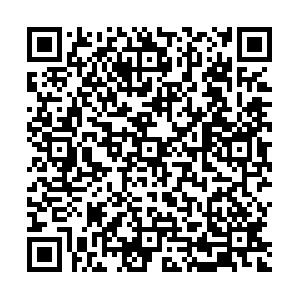| [1] |
郭小朝,刘宝善, 马雪松,等.新型歼击机滑出/起飞阶段飞行员信息使用需求[J].人类工效学,2002,8(2):1-7. GUO X C,LIU B S,MA X S,et al.Cockpit information required by advanced fighter pilots for displays in taxiing take-off[J].Chinese Journal of Ergonomics,2002,8(2):1-7(in Chinese).
|
| [2] |
卫宗敏,完颜笑如, 庄达民.飞机座舱显示界面脑力负荷测量与评价[J].北京航空航天大学学报,2014,40(1):86-91. WEI Z M,WANYAN X R,ZHUANG D M.Measurement and evaluation of mental workload for aircraft cockpit display interface[J].Journal of Beijing University of Aeronautics and Astronautics,2014,40(1):86-91(in Chinese).
|
| [3] |
卫宗敏. 飞机驾驶舱显示界面脑力负荷实验测量与数学建模[D].北京:北京航空航天大学,2014:7-8. WEI Z M.The experimental measurement and mathematical modeling of mental workload of aircraft cockpit display interface[D].Beijing:Beihang University,2014:7-8(in Chinese).
|
| [4] |
AKYEAMPONG J, UDOKA S,CARUSO G,et al.Evaluation of hydraulic excavator human-machine interface concepts using NASA_TLX[J].International Journal of Industrial Ergonomics,2014,44(3):374-382.
|
| [5] |
CAO A, CHINTAMANI K K,PANDYA A K,et al.NASA_TLX:Software for assessing subjective mental workload[J].Behavior Research Methods,2009,41(1):113-117.
|
| [6] |
BYRNE A, TWEED N,HALLIGAN C.A pilot study of the mental workload of objective structured clinical examination examiners[J].Medical Education,2014,48(3):262-267.
|
| [7] |
BORGHINI G, ASTOLFI L,VECCHIATO G,et al.Measuring neurophysiological signals in aircraft pilots and car drivers for the assessment of mental workload,fatigue and drowsiness[J].Neuroscience & Biobehavioral Reviews,2014,44:58-75.
|
| [8] |
HART S G, STAVELAND L E.Development of NASA-TLX (task load index):Results of empirical and theoretical research [J].Advances in Psychology,1988,52(6):139-183.
|
| [9] |
WEI Z M, ZHUANG D M,WANYAN X R,et al.A theoretical model of mental workload in pilots based on multiple experimental measurements[M]//HARRIS D.Engineering Psychology and Cognitive Ergonomics.Berlin:Springer International Publishing,2014:104-113.
|
| [10] |
URSIN H, URSIN R.Physiological indicators of mental workload[M]//MORAY N.Mental workload.New York:Springer US,1979:349-365.
|
| [11] |
WEI Z M, ZHUANG D M,WANYAN X R,et al.A model for discrimination and prediction of mental workload of aircraft cockpit display interface[J].Chinese Journal of Aeronautics,2014,27(5):1070-1077.
|
| [12] |
MIYAKE S, YAMADA S,SHOJI T,et al.Physiological responses to workload change.A test/retest examination[J].Applied Ergonomics,2009,40(6):987-996.
|
| [13] |
康卫勇,袁修干, 柳忠起.基于脑力负荷飞机座舱视觉显示界面优化设计[J].北京航空航天大学学报,2008,34(7):782-785. KANG W Y,YUAN X G,LIU Z Q.Optimization design of vision display interface in plane cockpit based on mental workload[J].Journal of Beijing University of Aeronautics and Astronautics,2008,34(7):782-785(in Chinese).
|
| [14] |
CAIN B. A review of the mental workload literature[J].Defence Research & Development,2007,9(4):1-34.
|
| [15] |
薛薇. SPSS统计分析方法及应用[M].3版.北京:电子工业出版社,2013:295-298. XUE W.SPSS statistical analysis and application[M].3rd ed.Beijing:Electronic Industry Press,2013:295-298(in Chinese).
|
| [16] |
LEHRER P, KARAVIDAS M,LU S E,et al.Cardiac data increase association between self-report and both expert ratings of task load and task performance in flight simulator tasks:An exploratory study[J].International Journal of Psychophysiology,2010,76(2):80-87.
|
| [17] |
SOHN S Y, JO Y K.A study on the student pilot's mental workload due to personality types of both instructor and student[J].Ergonomics,2003,46(15):1566-1577.
|
| [18] |
KARAVIDAS M K, LEHRER P M,LU S E,et al.The effects of workload on respiratory variables in simulated flight:A preliminary study[J].Biological Psychology,2010,84(1):157-160.
|
| [19] |
WILLIGES R C, WIERWILLE W W.Behavioral measures of aircrew mental workload[J].Human Factors:The Journal of the Human Factors and Ergonomics Society,1979,21(5):549-574.
|

 点击查看大图
点击查看大图







 下载:
下载:
